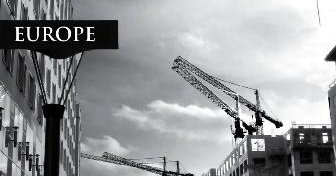Despite all these accomplishments, Europe does not have the confidence and optimism necessary to keep delivering growth, jobs and the other expectations that her citizens have.
What Europe’s economy needs is more integration, which creates a politically stronger Europe, better prepared to confront the challenges, to implement the necessary reforms and to deliver the results Europe’s citizens expect.
A European Social Model
The European Social Model has become one of the most discussed political issues in Brussels and throughout the European Union. In the widespread public debate surrounding the referenda for the Treaty Establishing a Constitution for Europe the fear that the Constitution would threaten ‘social Europe’ was one of the core arguments on the no-side, particularly in France. In the debate, the Anglo-Saxon model was portrayed as the main threat to the social model in continental Europe.
At the beginning of the British presidency in June 2005, Prime Minister Tony Blair turned the coin against those claiming that the Anglo-Saxon model is undermining a more solidaristic and ethically superior European Social Model:
‘What type of social model is it that has 20 million unemployed in Europe, productivity rates falling behind those of USA; that is allowing more science graduates to be produced by India than by Europe; and The purpose of social Europe and economic Europe should be to sustain each oththat, on any relative index of a modern economy – skills, R&D, patent, IT, is going down not up?’ [1]
Blair brought up all these economic issues in the debate about the Social Model, illustrating that we are really speaking about a Social and Economic Model.
There are undoubtedly substantial differences in the way European countries have organised their economic and social systems. Nevertheless, European countries are facing many of the same challenges: slow growth, high unemployment, loss of industry and jobs to low-cost countries, and of course dramatically increasing pension costs accompanied by low birth rates. Considering these common challenges Europe has much to gain from a truly European debate about the causes and the solutions to these challenges. The challenges facing Europe are so many and so wide, that an overall discussion about them is in itself a debate over a social and economic model.
When discussing core elements of the welfare state and the well-being of the European economy, it is in fact a central discussion about people’s hopes and expectations from Europe. One aspect often missing in this discussion is the institutional part. With this publication the Young European Federalists (JEF) try to encourage and stimulate the existing debate, as well as to further develop it by bringing in a stronger focus on the institutional dimension, pointing to the lack of governance.
A wider debate about Europe’s social model can help Europe overcoming some of her complexes towards the US and other countries. In the words of Jeremy Rifkin;
- While we Americans tend to over-hype our successes and not talk about our failures, my European friends seem to be continually preoccupied with their failures and rarely talk about their successes. Dreams require hope, optimism and confidence in the future. Pessimists and cynics do not lead society into the future. They only hold society back. What Europe desperately needs now is a new generation of politically committed people willing to dream of a better tomorrow and take the necessary steps to make their dream reality. [2]
Common challenges
A definition of the European Social Model is not easy, since there is little agreement that there is one model. Traditionally one separates between four different social models in Europe, or at least in Western Europe.
The already mentioned Anglo-Saxon model is usually characterised by strong competitiveness, low unemployment, as well as a fairly limited welfare state. That is to say, the collective provision of social goods is limited to ensuring basic living standards and helping those in need.
The Franco-German continental model has a strong state to provide collective social goods, building on the Bismarckian tradition. However, the model has come under pressure because of long periods of high unemployment, as well as slow growth.
The Mediterranean model combines high levels of unemployment with low levels of social benefits, and is generally conceived as a poor solution. In this region the role of the family as an alternative to collective solutions to social problems remains important.
The model that has received most attention lately has been the Nordic model - more specifically the Danish so-called ‘Flexicurity Model’. This model is characterised by a flexible labour market that has contributed to low levels of unemployment and high scores on competitiveness indexes, combined with a strong welfare state delivering high levels of social protection. At the same time the Nordic Model is criticised for having a large part of the population outside the labour market living off welfare, made possible by high tax levels.
These four models do however have some common features. Most importantly is that the European countries have some sort of a welfare state. That is to say that there is a widespread support for equal right to education, health care and other forms of social security, for all citizens without regard to a citizen’s individual financial ability.
In the previously mentioned speech to the European Parliament, Tony Blair also acknowledged that one cannot separate between ‘social Europe’ and economic or ‘free market Europe’: ‘Political Europe and economic Europe do not live in separate rooms. The purpose of social Europe and economic Europe should be to sustain each other’, Blair said. [3]
Just as the models in Europe have some common features, hey also have some common challenges. Several major European economies are experiencing long-term high levels of unemployment combined with low levels of employment. The combination of increasing burdens of pensions on public budgets and low birth rates is another problem many countries are facing. One can get the impression that globalisation for some is seen as the cause of all problems today. There is however little doubt that a more open economy, both within Europe and on a global level, has made industry and enterprises more mobile. The labour market is not as mobile, and has problems in adjusting to these changes.
Europe’s economy needs more integration, because the solutions to many of the problems in Europe are to be found in Europe.
If one compares GDP per capita in the 15 member states in the EU before May 2004 with the different states in the USA, only Luxembourg is placed among the top 40. [4] There are, in other words, good reasons from an economic perspective, to encourage a debate about the European Economic and Social Model.
Too social or too liberal?
Europe and different aspects of the European Model is under continuous criticism from different political forces. One of the paradoxes from the debate surrounding the Constitution was that in France it was criticised for being a threat against social Europe, while the UK fought hard against the social charter and managed to get an opt-out at the June 2007 Summit.
Another paradox in Europe today has been pointed out by John Palmer from the European Policy Centre. [5] The EU is very attractive among its neighbours who for years literally have been lining up to join the Union. The European Union has also grown stronger in economic as well as political terms. Today, the EU is a major economic and political power in the world. The paradox is that despite the great accomplishments of the EU during the last 50 years, and despite the perception of the EU by its neighbours and other parts of the world, internally Europe is considering the developments in a highly self critical way. The EU is what Jeremy Rifkin calls ‘a reluctant superpower’, and this critical way of viewing the development certainly does not boost the team spirit among the European players.
The critical assessment of the European accomplishments has led to the questioning of the European Model. And in general people have turned in two opposite directions to find a way out of the perceived failure of the European model.
Many have done what perhaps is a typical human characteristic: they have turned inwards and backwards, arguing that things used to be better before, and that forces outside the country are responsible for all things bad—capitalists, neo-liberals, the free market, the ‘Polish plumber’, low-cost countries, globalisation, etc. It is easy to find someone or something to blame. This group has staunchly been trying to stop the development of an internal market for services, and to impose restrictions on the free movement for workers from new member states. They have argued that new member states should raise their corporate tax to prevent companies from moving from old member states to new member states, and they want to create national champions in crucial sectors of the economy to be protected against foreign capital and ownership.
The other group has turned outward and argues that we have to adopt someone else’s model – usually the American model. They argue that the European Social Model with the strong role of the state is not the solution, but the cause of the problems in Europe. This group is sceptical to any development in Europe that involves an increased role of the state or the EU. They want to privatise public services, maintain tax competition and adapt the European society to the American way or that of the booming economies in Asia.
As is usually the case, the solution to Europe’s problems is to be found somewhere in between these two extremes. The traditional right/left distinction has not been able to properly address the challenges of today. Therefore, it is necessary to broaden the perspective to see beyond the left/right’s focus on government. What we need to concentrate on is governance, not government. Many of the main challenges facing Europe’s economy have to do with lack of government. This means that the solution is institutional, rather than right/left political.
The challenge is to show why Europe’s economy needs more integration, why the European level needs to be acknowledged and strengthened at the same time as the necessary reforms need to be explained, decided and implemented. For this to happen Europe needs its decision makers to show political leadership that so far have been missing.
Europe is the solution
The two alternative directions for a way out of the problems Europe is experiencing today have one important feature in common: distrust of Europe and European integration. The inwards looking group has turned to nationalism and protectionism. They speak of globalisation as the big threat, but they are just as afraid of competition from workers from new member states as they are afraid of competition from China or India.
The outwards looking group, on the other hand, is blindly staring to America for solutions. They have a profound scepticism of political solutions, and therefore oppose developments towards a stronger European level of governance. It is very unfortunate that the two dominating poles see European integration as a part of the problem rather than as a possible solution to the economic challenges.
Conclusion
The Lisbon agenda is a perfect example that the problems have been identified at the European level, but that the national level has failed in implementing the necessary reforms to meet these problems.
Europe’s economy needs more integration, because the solutions to many of the problems in Europe are to be found in Europe: they just have not been lifted up to the European level yet. And more importantly, more integration creates a politically stronger Europe, better prepared to confront the challenges and to implement the necessary reforms.


Follow the comments: |
|
